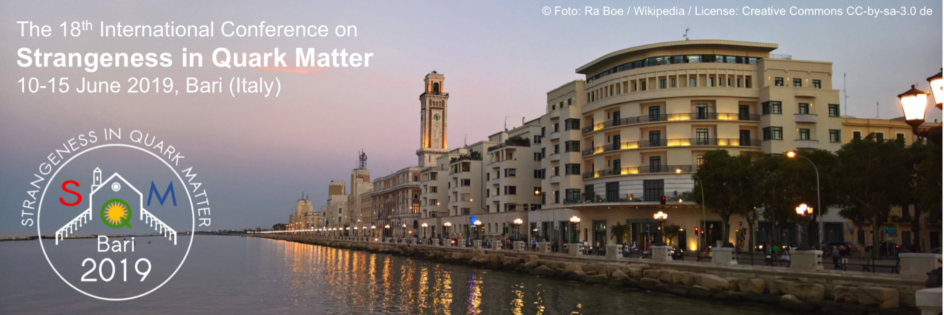Speaker
Description
The modifications of basic properties of hadrons inside a hot and dense nuclear matter are a consequence of the partial restoration of the chiral symmetry and are an intensively studied topic for the last 30 years [1]. Whereas the effects for K$^+$ and K$^0_S$ appear to be theoretically more straightforward and experimentally established [2,3], it seems not to be the case for K$^–$. A series of analyses of heavy-ion collisions performed by the HADES and FOPI Collaborations at beam energy of 1–2A GeV have shown that a relevant source of negative kaons is the $\phi$ $\rightarrow$ K$^+$K$^–$ decay channel [4,5]. However, the kinematics of K$^–$ mesons produced in this channel is different than that of kaons emitted directly from the collision zone.
This talk will be devoted to the recent finding that the $\Lambda$ (1520) $\rightarrow$ pK$^–$ channel, not analysed yet at energies around the kaon threshold, is another potentially relevant source of K$^–$ meson emission. Two sets of experimentally obtained yields from Au+Au at 1.2A GeV (HADES) and Ni+Ni at 1.9A GeV (FOPI) were fitted with the THERMUS statistical model code [6]. Based on the obtained parameters, the yields of $\Lambda$ (1520) were estimated in each case, and hence the contributions to the K$^–$ yield. As the HADES Collaboration prepares to perform the Ag+Ag collisions at beam energy of 1.65A GeV, a prospect for an extraction of the $\Lambda$ (1520) yield from these collisions will also be covered in this talk.
[1] V. Koch, Intl. Jour. of Mod. Phys. E 06, 203 (1997).
[2] M. Benabderrahmane et al. (FOPI Collaboration), Phys. Rev. Lett. 102, 182501 (2009).
[3] C. Hartnack et al., Phys. Rep. 510, 119 (2012).
[4] G. Agakishiev et al. (HADES Collaboration), Phys. Rev. C 80, 025209 (2009).
[5] K. Piasecki et al. (FOPI Collaboration), Phys. Rev. C 94, 014901 (2016).
[6] S. Wheaton and J. Cleymans, Comput. Phys. Commun. 180, 84 (2009).
| Track | Strangeness and Light Flavour |
|---|
